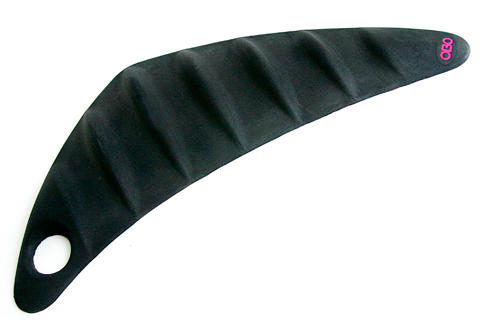After a long August, I have finally had the time to write my review of my Robo elbow guards I won during the Review Your Kit Competition. I will divide the article in four sections:
- At first sight
- First time using them
- Tech specs
- Overall impression
So…read away.
At First Sight
When my elbow guards came in the mail, It was wrapped in a printer cartridge box, so, I came to the conclusion that the package was for my mom. On my way to the basement, I realized that it had been sent from New Zealand and thought “Isn’t that strange? I didn’t know they made printer cartridges in New Zealand. I then saw it was addressed to me and instantly connected the dots. I grabbed the closest knife and cut off the tape. As soon as the box opened I was extatic. Wrapped in their mesh bag gleaming white, I have never had a better July 30th.
If you ever thought that the elbow guards looked, well, thin, than I can tell you you thought wrong! I had that thought upon seeing the photos during the Beta testing era, but not any more! The elbow guards are possibly the solidest Upper body product ever created by OBO (aside from helmets of course) As they seem to be made of steel compared to my Cloud body armour. The Velcro straps looked solid and the design looked very fitting.
First Time
I received the parcel the day before my Nationals tournament so I did not get to try them in practice before hand. The first time I used them, They felt somewhat itchy but comfortable never the less. I decided to use them without the forearm cover to make the more breathable. Therefore, the velcro strap that ties the plasticky section with the mesh section was left exposed to the inside of the joint.This proved to be rather uncomfortable while I was sitting on the bench during the first half but not so much of a nuisance while I was playing. Trying them on with the forearm cover, this problem did not occur.
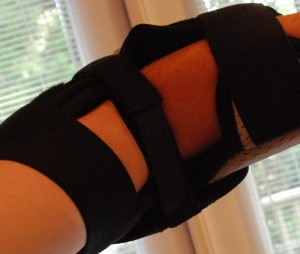
The middle strap pinches when flexing for a long time
I didn’t know the full strength of the velcro straps and at first, it appeared to be glued on! I didn’t have this problem with my body armour so I thought that something might have been wrong. I later found out that you just have to pull really, really hard to rip it off. Kudos to Obo for designing it this way or else it would probably fall off in wet weather (Unless I got an Obrella ;))
The inner padding was comfortable but very breathable and I found my sweat to stick to my arm a lot. They’re now somewhat smelly – and I have no plans to wash them – but nevertheless quite comfortable and move with the body giving great protection and movement at the same. I always thought giving great protection and movement was a challenge to most hockey goalkeepers and the previous chest pad I had used (ice hockey) was clearly meant to be bigger and thicker than increased mobility. Obo seems to have two and two together with the elbow guard and the mix of protection and mobility is superb.
Teck Specs
When I first broke down the elbow guards into their separate pieces, I found one word: confusing. It seemed as if there were infinite possibilities on how to customize the elbow guards. I turns out there were about eight (both arms). The elbow guard is comprised of three pieces:
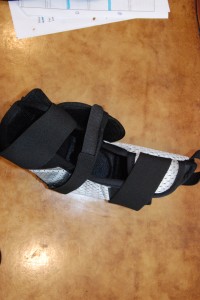
The core
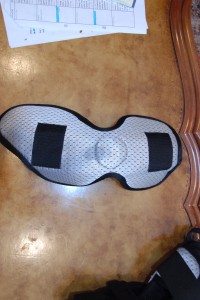
The inner pad
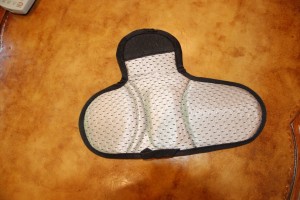
The outer pad
These three segment provide many different combos on each arm to optimize the protection you want. There are several different types of foam incorporated into the design with a possible hint of plastic. The two I will point out are the two black pads on the outside and the other that covers those important blood vessels on the underside of your wrist.
The first is the perfect material that allows you to log, slide, and dive with ease while “Going Dutch” and offers optimal protection to your elbow while logging on a corner.
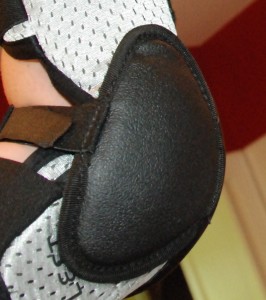
Possibly the greatest part about the elbow guards 🙂
The latter, gives the ultimate protection flow between your HPs and the elbow guards so as not to get injured if the ball goes beneath your HP.
Overall impression
Another fine product Obo! I believe you guys have surmounted the challenge combining both protection and mobility. I am very pleased with my elbow guards and always enjoy keeping while wearing them. They have given me confidence where I was doubtful of my protection and allow to play a much better game. Perhaps a suggestion for v2 of the guards is to make the strap around the joint more of a slip on like the Nike Bauer ice hockey guard. Thanks for my prize. This shit really works!
KanuckKeeper
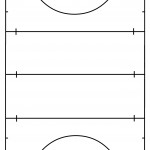
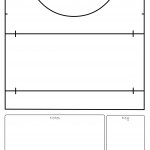
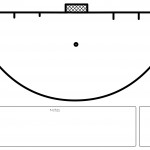






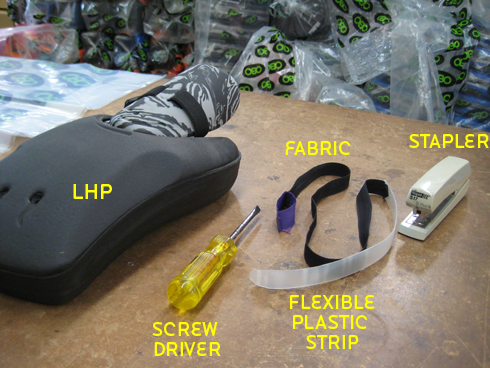
 Question:
Question:


